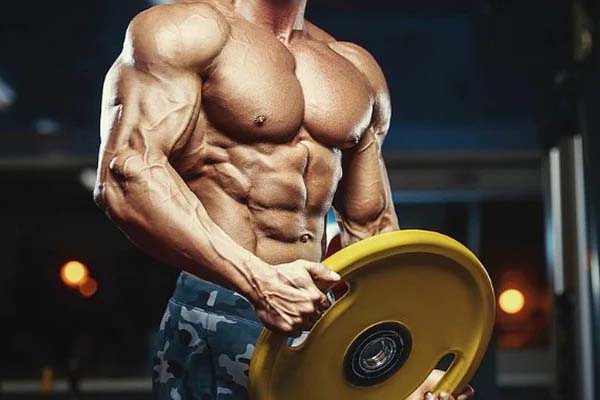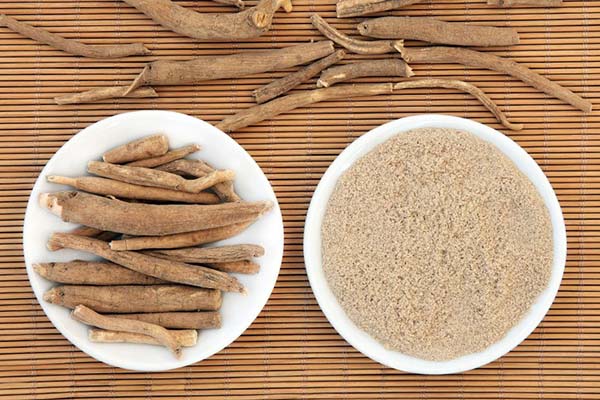When it comes to enhancing physical performance or changing one’s appearance, steroids often come into the conversation. These potent substances have been the topic of many debates, not only in the sports world but also among the general public. One curious question that arises is whether steroids can make you grow taller. Let’s dive into this topic.
What are steroids?
Steroids are organic compounds with a specific molecular structure consisting of four interconnected cycloalkane rings. They are found naturally in plants, animals, and fungi, and serve a variety of roles in these organisms. The term “steroid” can refer to any of a large number of different molecules, but in the context of human health and performance, it typically refers to one of two types:
Corticosteroids: These are steroids that your adrenal glands produce naturally. Doctors often prescribe them to combat inflammation in the body. They’re used to treat conditions such as asthma, eczema, arthritis, and other inflammatory diseases. Examples include prednisone and cortisone.
Anabolic-androgenic steroids (AAS): These are synthetic versions of testosterone, a male hormone. They are often referred to simply as “anabolic steroids,” and they promote the growth of skeletal muscle (anabolic effects) and the development of male sexual characteristics (androgenic effects). Medically, they’re used to treat conditions like delayed puberty, muscle loss due to disease, or hormone imbalances. However, they’re also misused by some athletes, bodybuilders, and others to enhance performance or improve physical appearance.
While the primary medical uses of steroids are legitimate and essential, misuse can lead to a series of adverse health effects, ranging from mild side effects to serious health risks.

How do steroids work?
Steroids function by modulating cellular processes, altering the behavior of cells, and influencing the expression of genes. Depending on the type of steroid and its intended action, the mechanism of operation can vary. Here’s a breakdown of how different types of steroids work:
Corticosteroids:
Corticosteroids, such as cortisol, are produced naturally by the adrenal glands. They play a role in numerous bodily processes:
- Anti-inflammatory: Corticosteroids reduce inflammation by suppressing the activity and effectiveness of certain immune system cells. This helps manage conditions characterized by inflammation, such as asthma or rheumatoid arthritis.
- Metabolic regulation: They play roles in the metabolism of carbohydrates, proteins, and fats, influencing how the body uses and stores these nutrients.
- Stress response: Cortisol, a primary corticosteroid, plays a key role in the body’s response to stress.
When taken as medication, corticosteroids mimic these actions to treat inflammation or to replace steroids in individuals who do not produce enough naturally.
Anabolic-androgenic steroids (AAS):
AAS are synthetic derivatives of testosterone, the primary male sex hormone. They can bind to and activate testosterone receptors in the body, influencing cells and tissues in the following ways:
- Protein synthesis: Steroids increase the rate of protein synthesis in cells, leading to increased muscle tissue. This is the “anabolic” effect.
- Reduction of muscle breakdown: AAS can also reduce the rate at which muscle proteins are broken down, further contributing to muscle growth.
- Increased bone production: They promote bone growth and maturation, which is especially beneficial for individuals with stunted growth.
- Male characteristics: As “androgenic” compounds, AAS can promote male characteristics like a deeper voice, increased body hair, and the development of the Adam’s apple.
It’s worth noting that the misuse of AAS to enhance athletic performance or for cosmetic purposes can lead to a host of adverse effects, from mood disturbances to physiological complications.
Mechanism at the cellular level:
On a more detailed scale, steroids typically function by passing through the cell membrane and binding to specific receptor proteins within the cell. This steroid-receptor complex then moves into the cell’s nucleus, where it can influence DNA transcription, leading to altered mRNA. This altered mRNA then directs the synthesis of specific proteins, thus influencing cellular activity.
Do steroids make you grow taller?
Steroids, particularly the anabolic-androgenic type, do not directly make you grow taller in the way that many might think. Their primary function is to promote muscle growth and the development of male sexual characteristics. However, the relationship between steroids and height is more complex than it seems at first glance, especially in adolescents.
- Growth Plates and Adolescents:
In growing children and adolescents, the long bones of the arms and legs have regions called growth plates. These plates are made of cartilaginous tissue and are the zones where bone lengthening occurs, leading to increases in height. Eventually, these plates close (ossify) after puberty, signaling the end of bone growth in length.
- Effect of Anabolic Steroids on Growth Plates:
Anabolic steroids can cause an earlier-than-normal closing of the growth plates in adolescents, leading to a premature halt in vertical growth. Thus, if an adolescent uses anabolic steroids before they’ve reached their natural height potential, they might end up shorter than they would have been without the steroids.
- Human Growth Hormone (HGH):
Another substance often confused with anabolic steroids is human growth hormone (HGH). HGH directly affects the growth plates and stimulates height growth. Synthetic HGH is sometimes prescribed to children who have growth disorders to help them achieve a more typical height. However, misuse of HGH can lead to disproportionate growth and other side effects.
- Other Steroids and Height:
Some corticosteroids, when used chronically at high doses in children, can impair growth. This is a concern in children with conditions like asthma, who might use inhaled or systemic corticosteroids for extended periods.
While anabolic steroids promote muscle growth, they can have the unintended effect of halting height growth in adolescents by prematurely closing the growth plates. Conversely, human growth hormone (which is not a steroid) can promote height growth, but its misuse can lead to other complications. Always consult with a healthcare professional before considering any form of steroids or growth hormone treatment.
What are the risks and side effects of using steroids?
Steroids, when used medically and under appropriate supervision, can be beneficial for treating various conditions. However, when misused or abused, steroids can pose significant risks and side effects. The side effects can vary depending on the type of steroid, the dose, the duration of use, and individual susceptibilities.
Let’s focus on the side effects associated with anabolic-androgenic steroids (AAS), which are often misused for performance enhancement or aesthetic reasons:
Acne:
Steroids can lead to overactive sebaceous glands, causing oily skin and severe acne, particularly on the face, back, and shoulders.
Hair loss:
AAS can speed up the onset of male pattern baldness in those genetically predisposed to the condition.
Mood changes:
Steroid use can lead to mood swings, irritability, aggression, manic symptoms, and even suicidal thoughts or actions in extreme cases.
Testicular shrinkage:
Long-term use of AAS can result in a reduction of the size of the testicles due to decreased natural testosterone production.
Gynecomastia:
This refers to the development of breast tissue in males, caused by an imbalance of estrogen and testosterone.
Liver damage:
Oral anabolic steroids are metabolized in the liver, and prolonged use can lead to liver diseases or tumors.
Cardiovascular issues:
Steroids can lead to increased blood pressure, changes in cholesterol levels, and an elevated risk of heart diseases and strokes.
Addiction:
While not physically addictive in the way that many drugs are, individuals can develop a psychological dependence on AAS.
Masculinization in women:
Women using AAS may develop male characteristics, including a deeper voice, increased body hair, changes in the menstrual cycle, and clitoral enlargement.
Reduced fertility:
Steroid use can lead to decreased sperm production, which can be reversible but not always.
Virilization in children:
If children are exposed to AAS, they might show signs of premature puberty and virilization.
Increased risk of tendon injuries:
While steroids increase muscle strength, they might not equally strengthen tendons, leading to an imbalance that can cause injuries.
Altered blood sugar levels:
Steroid use can impact insulin and glucose metabolism, potentially leading to diabetes in predisposed individuals.
Fluid retention:
This can lead to swelling in different parts of the body.
Altered immune function:
Some steroids can suppress immune function, increasing susceptibility to infections.
For corticosteroids, when used in high doses or over extended periods, there are also concerns about:
- Osteoporosis
- Weight gain
- Increased risk of infections
- Cushing’s syndrome (characterized by a fatty hump between the shoulders, a rounded face, and pink or purple stretch
- marks on the skin)
- Glaucoma and cataracts
- Mood disturbances
Adrenal suppression, where the body becomes dependent on the external source of steroids and stops producing its own.
It’s essential to understand that the potential side effects and risks associated with steroids increase with misuse, prolonged usage, and higher doses. Anyone considering or prescribed steroid therapy should consult with a medical professional to understand the potential risks and benefits fully.

What are some alternatives to using steroids?
There are several alternatives to using steroids, especially if the goal is to enhance athletic performance, muscle growth, or overall physique. While no substitute provides the rapid effects of anabolic steroids, many natural and safer options can still yield substantial results over time. Here are some alternatives:
Resistance Training:
Engaging in consistent and structured strength training can lead to muscle growth and strength gains. Progressive overload, where the intensity of exercises is gradually increased over time, is key.
Protein Supplements:
Consuming protein powders, such as whey, casein, or plant-based proteins, can support muscle repair and growth. Amino acids in protein are the building blocks of muscle tissue.
Creatine:
A natural compound found in small amounts in certain foods and also synthesized by the body. Creatine supplementation can improve exercise performance, leading to increased muscle mass when combined with resistance training.
Healthy Diet:
Consuming a balanced diet with adequate protein, healthy fats, and complex carbohydrates supports muscle growth and energy requirements. Proper nutrition is fundamental for muscle growth and recovery.
Rest and Recovery:
Muscles grow and repair during rest. Ensuring adequate sleep and giving muscles time to recover after workouts is crucial for optimal gains.
Natural Testosterone Boosters:
Some supplements can support the body’s natural testosterone production. Examples include fenugreek, vitamin D, zinc, and D-aspartic acid. However, the efficacy of these boosters varies, and more research is needed.
Branched-Chain Amino Acids (BCAAs):
These are essential amino acids, including leucine, isoleucine, and valine, which may support muscle growth and reduce muscle soreness.
Beta-Alanine:
An amino acid that can improve muscular endurance, potentially allowing for more productive workouts.
HMB (Beta-hydroxy beta-methylbutyrate):
A compound derived from the amino acid leucine, which can help reduce muscle protein breakdown and promote muscle growth.
Hormone Replacement Therapy (HRT):
For those with medically diagnosed hormonal deficiencies, HRT (under a doctor’s supervision) can restore hormone levels to a normal range. This is different from anabolic steroid abuse and is prescribed and monitored by medical professionals.
SARMs (Selective Androgen Receptor Modulators):
SARMs are a class of therapeutic compounds with similar properties to anabolic agents but with reduced androgenic properties. While some users turn to SARMs as an alternative to steroids, they are not free from side effects, and their safety in the long term is not well-understood.
In conclusion,
While steroids have a role in medical treatments and can offer rapid results in muscle growth and performance enhancement, they aren’t a direct ticket to increased height. Furthermore, the risks and side effects associated with their misuse can be severe and long-lasting. For those seeking to improve their physique or performance, natural methods and safe supplementation are always the best route. Remember to consult with health professionals when considering any form of supplementation or drastic changes to your fitness regimen



